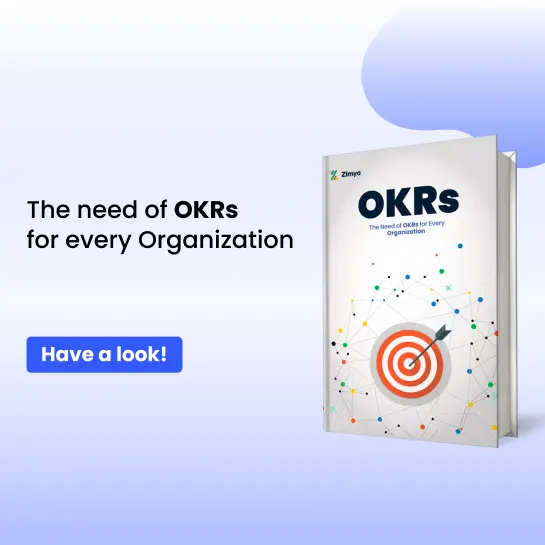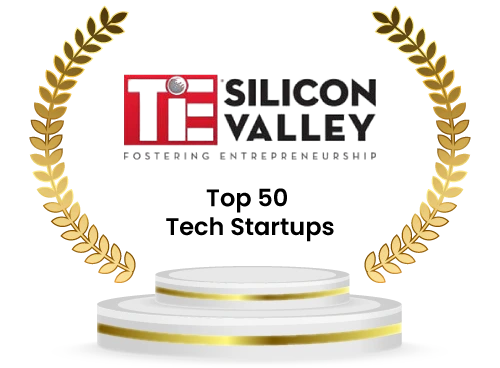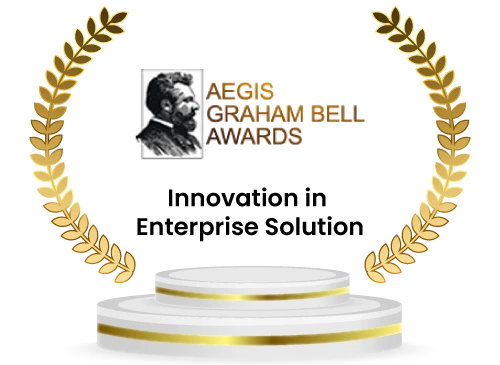Project management without the proper tool is like navigating an ocean without a compass. You may be in motion, but you’ll end up lost. No matter what you’re managing, whether its marketing campaigns, product releases, client work, or internal processes, a clear structure and transparency are essential. And that’s precisely what Project Management Tools offer.
They assist you in planning, scheduling, allocating, and tracking tasks with ease. Further, with all the tasks, communication, files, and timelines in one place, you can say goodbye to cumbersome spreadsheets and confusing email chains.
Overall, with remote work and hybrid teams on the rise, project management software has transitioned from a “nice-to-have” to a necessary productivity system. Because it keeps everyone in sync, regardless of where they work from.
So, in this blog, we’ll break down what project management software really is, the best tools available today, and how to choose the perfect one for your team
What is Project Management Software?
Project Management Software aka timesheet software is an electronic tool that assists teams in planning, organizing, and carrying out projects in an efficient manner. Moreover, it is a project planner, a task tracker, and a collaboration tool. Which allows teams to see work progress and hit deadlines right on target.
In other words, it’s your team’s virtual control center, where every task, conversation, files, and updates reside, in one tidy place.
This is what it generally does:
- Task Management: Splits big projects into smaller, actionable tasks and subtasks.
- Project Tracking: Monitors progress of every activity using visual dashboards, Gantt charts, or Kanban boards.
- Collaboration: Promotes collaboration using file sharing, chat functionality, and live updates.
- Resource Allocation: Assists managers in allocating work intelligently based on workload and availability.
- Project Planning: Smooth execution through mapping dependencies and timelines.
Therefore, effectively, project management systems bring order to disorganization, enhance productivity, and establish accountability, assisting teams in delivering results more quickly and better.
List of Best Project Management Tools
With dozens of options out there, finding the right project management software can be overwhelming. To make it easier, here’s a curated list of the best project management tools in 2025, suitable for startups, SMBs, and enterprises alike.
1. Zimyo
Zimyo is an all-in-one team management software designed to simplify HR, payroll, and project management in one unified platform. It’s perfect for organizations that want to align people, performance, and productivity.
Zimyo Timesheet helps teams manage tasks, set deadlines, and monitor project timelines with complete transparency. Also, from tracking milestones to approving deliverables, Zimyo brings structure and visibility to every project.
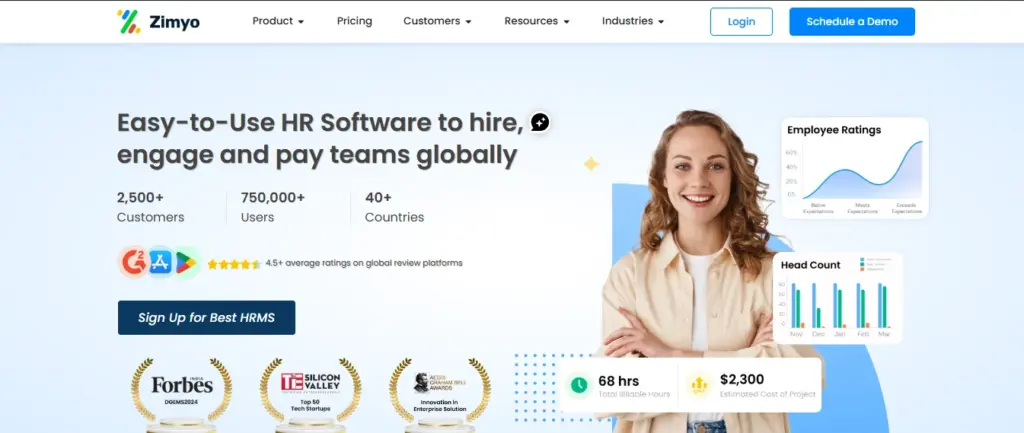
Key Features:
- End-to-end project and task management
- Custom workflows and approvals
- Centralized dashboard for teams
- Real-time notifications and progress updates
- Integration with HR modules for better alignment
Pros:
- User-friendly interface
- Combines HR and project management
- Excellent for startups and SMEs
Cons:
- Limited third-party integrations (being expanded)
Best For: Businesses seeking an integrated project management system with HR capabilities.
2. Asana
Asana is one of the most popular task management tools, known for its simplicity and visual workflow design. Moreover, It helps teams plan projects, assign responsibilities, and track progress without the clutter of emails or spreadsheets.

Key Features:
- Task creation and assignment
- Multiple views (List, Board, Calendar, Timeline)
- Goal tracking and reporting
- Workflow automation
Pros:
- Extremely user-friendly
- Great visualization tools
- Seamless integrations with Slack, Google Workspace, and Teams
Cons:
- Might feel complex for small teams
3. Zoho Projects
Zoho Projects offers a comprehensive project management software solution perfect for startups and growing businesses. First It helps you plan projects, track milestones, monitor budgets, and collaborate with your team just in one dashboard.
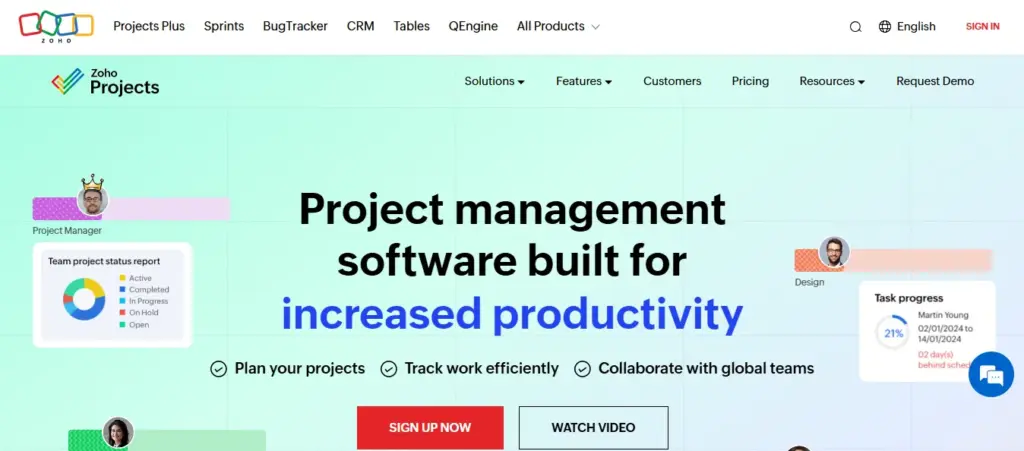
Key Features:
- Gantt charts for project timeline tracking
- Task dependencies and milestones
- Time tracking and timesheets
- Built-in chat and discussion forums
Pros:
- Great value for money
- Scalable for teams of all sizes
- Works seamlessly with other Zoho tools
Cons:
- Interface could be more intuitive
4. Jira
Jira, developed by Atlassian, is a powerful project tracker built specifically for software teams. Also, it supports Scrum, Kanban, and agile frameworks, helping teams manage sprints, bugs, and releases efficiently.
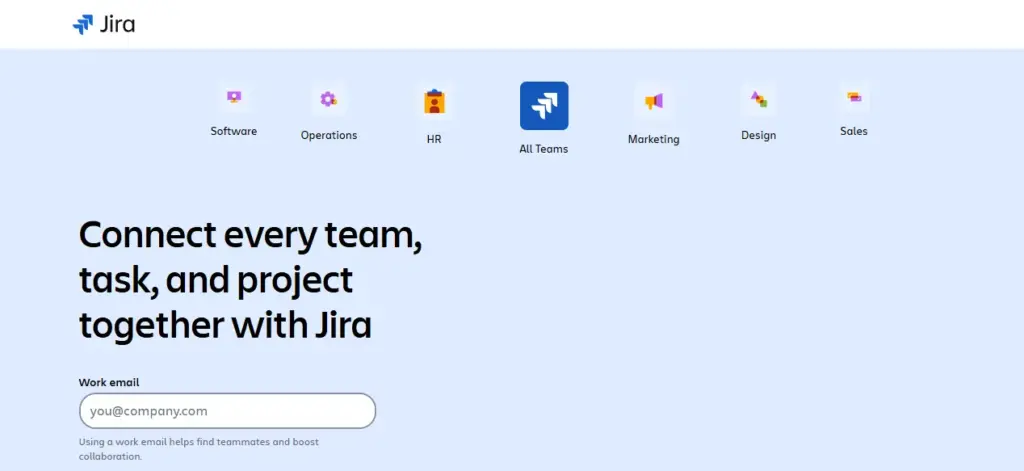
Key Features:
- Scrum and Kanban boards
- Issue and bug tracking
- Sprint management and backlog prioritization
- Customizable workflows
Pros:
- Ideal for agile and DevOps environments
- Advanced reporting tools
Cons:
- Steeper learning curve
5. Monday.com
Monday.com is a colorful and highly visual project tracking software that allows teams to plan, organize, and collaborate on projects in one place. Therefore, it’s perfect for marketing, product, and operations teams seeking a dynamic, easy-to-navigate dashboard.
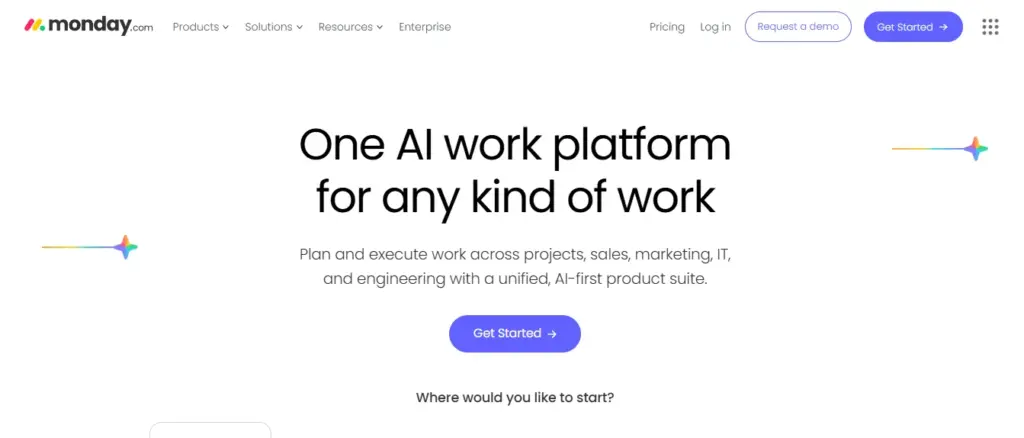
Key Features:
- Task assignment and tracking
- Visual project timelines
- Automations for repetitive workflows
- Integration with over 40 apps
Pros:
- Extremely visual and engaging
- Easy to set up and customize
- Supports automation without coding
Cons:
- Costs can rise with premium features
6. Adobe Workfront
Adobe Workfront is designed for large organizations handling complex, cross-functional projects. On the other hand, it centralizes work management, allowing teams to plan, execute, and measure results in real time.
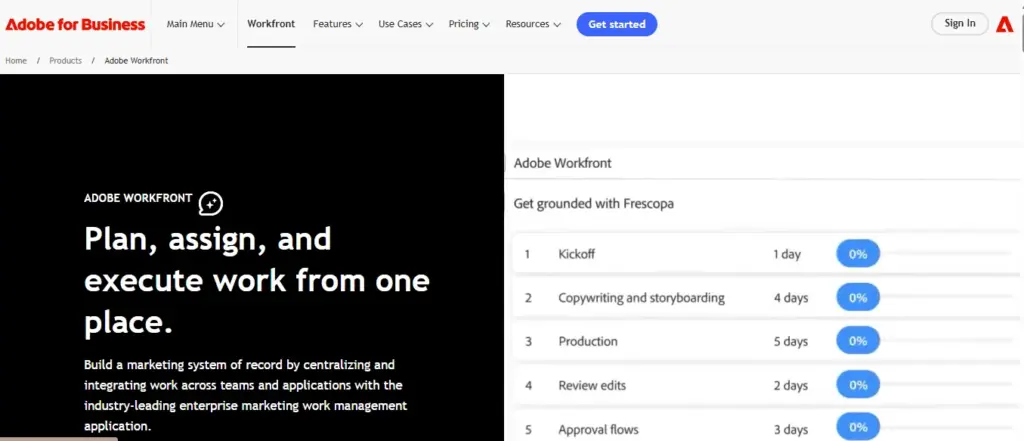
Key Features:
- Project portfolio management
- Workflow automation
- Resource optimization
- Integration with Adobe Creative Cloud
Pros:
- Perfect for large-scale projects
- Strong reporting and analytics
Cons:
- Complex interface and higher pricing
7. ClickUp
ClickUp is an all-in-one task management software that allows you to create, assign, and track tasks with extreme flexibility. Further, it’s built to adapt to your workflow and not the other way around.
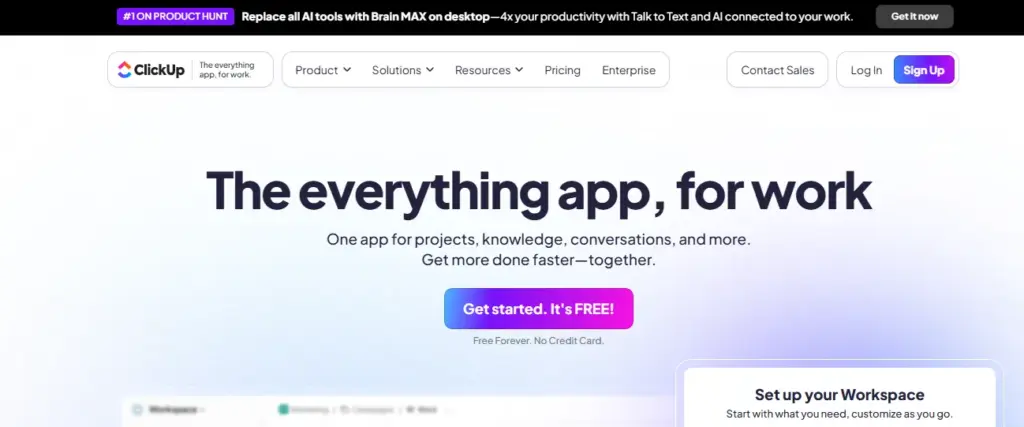
Key Features:
- Task lists, Gantt charts, and dashboards
- Goal tracking and time tracking
- Custom fields and templates
- AI-powered features
Pros:
- Highly customizable
- Affordable plans
- Scalable for any business size
Cons:
- Too many features can feel overwhelming
8. Basecamp
Basecamp focuses on making communication and task coordination effortless. Moreover, it replaces email threads and scattered messages with organized discussions, to-do lists, and file sharing.
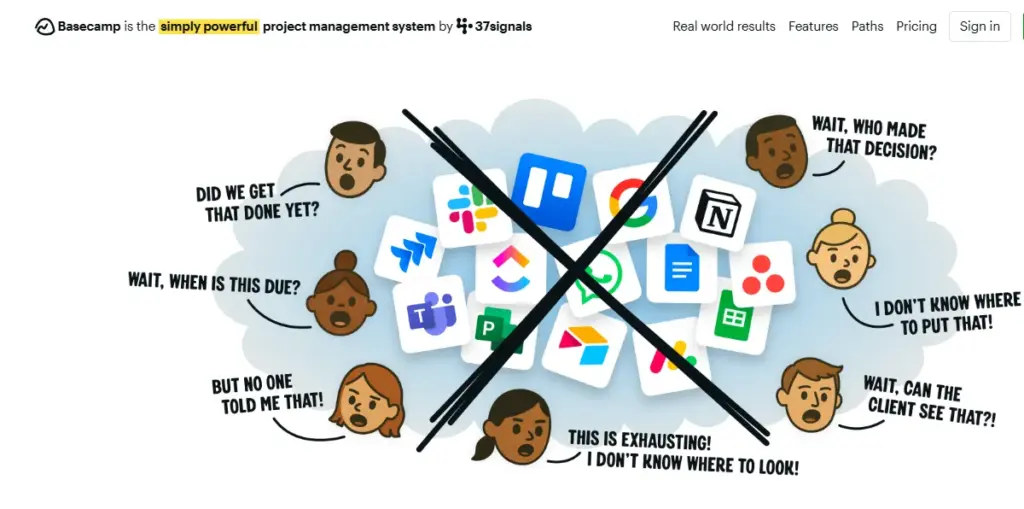
Key Features:
- To-do lists and message boards
- Group chat and file storage
- Automatic check-ins
Pros:
- Minimal learning curve
- Great for communication and collaboration
Cons:
- Lacks advanced reporting and automation
9. Trello
Trello is a fan favorite among creative and agile teams thanks to its drag-and-drop task tracker. Additionally, it uses boards, lists, and cards to organize tasks in a highly visual way which is perfect for small projects and team collaboration.
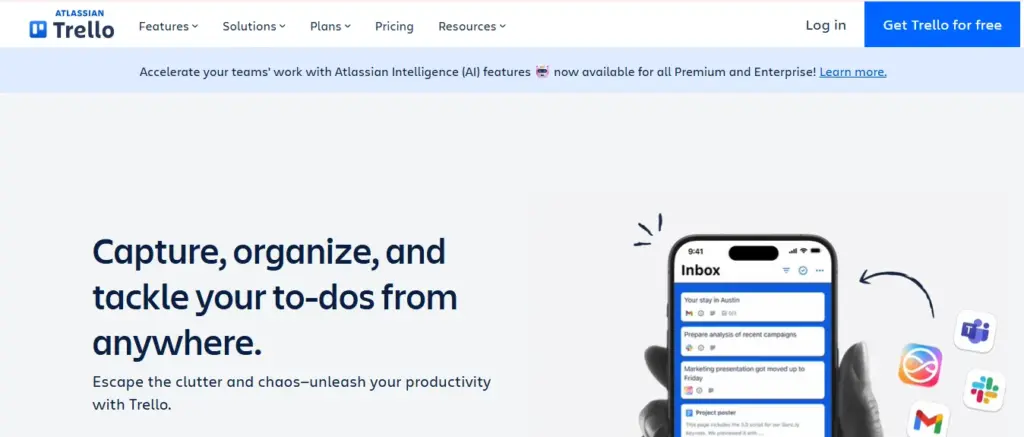
Key Features:
- Drag-and-drop task cards
- Power-ups for automation and integrations
- Color-coded labels and due dates
Pros:
- Simple and beginner-friendly
- Great visualization
- Works well for freelancers and small teams
Cons:
- Not ideal for complex projects
10. PocketHRMS
PocketHRMS doubles as both HR management and project management software, designed to streamline HR operations, employee engagement, and internal task assignments.
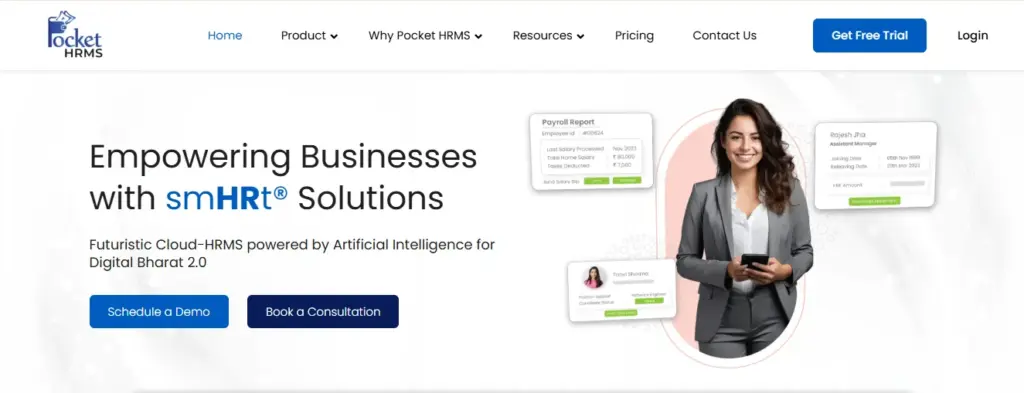
Key Features:
Pros:
- Combines HR + project functions
- Easy to adopt for HR departments
Cons:
- Limited customization for large projects
11. YoroProject
YoroProject is a modern project tracker that leverages AI and automation to enhance productivity. Besides, it provides predictive analytics, workflow automation, and visual insights for smarter decision-making.
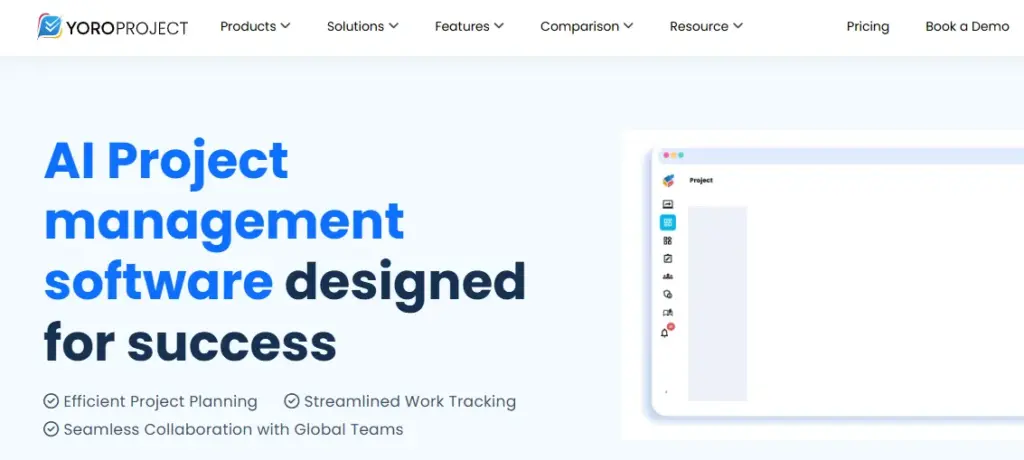
Key Features:
- AI-powered analytics
- Workflow automation
- Real-time dashboards
Pros:
- Futuristic and efficient
- Great user interface
Cons:
- Still new in the market
12. Wrike
Wrike is a robust project management software built for collaboration across large organizations. Further, it offers customizable dashboards, real-time reports, and automation to help teams stay aligned and productive.
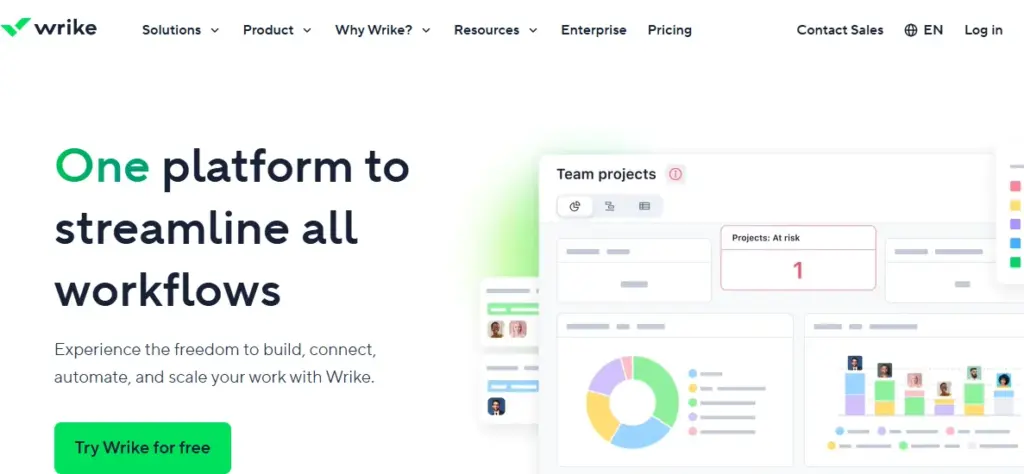
Key Features:
- Gantt charts and Kanban boards
- Custom dashboards
- Resource and workload management
Pros:
- Suitable for both small and large teams
- Excellent analytics
Cons:
- Slightly complex for new users
Benefits of Project Management Software & Tools
In the modern workplace, time is money and efficiency is everything. Whether you’re handling multiple clients, launching a new product, or managing a remote team, having a well-structured workflow can make or break your success. This is exactly where project management tools shine.
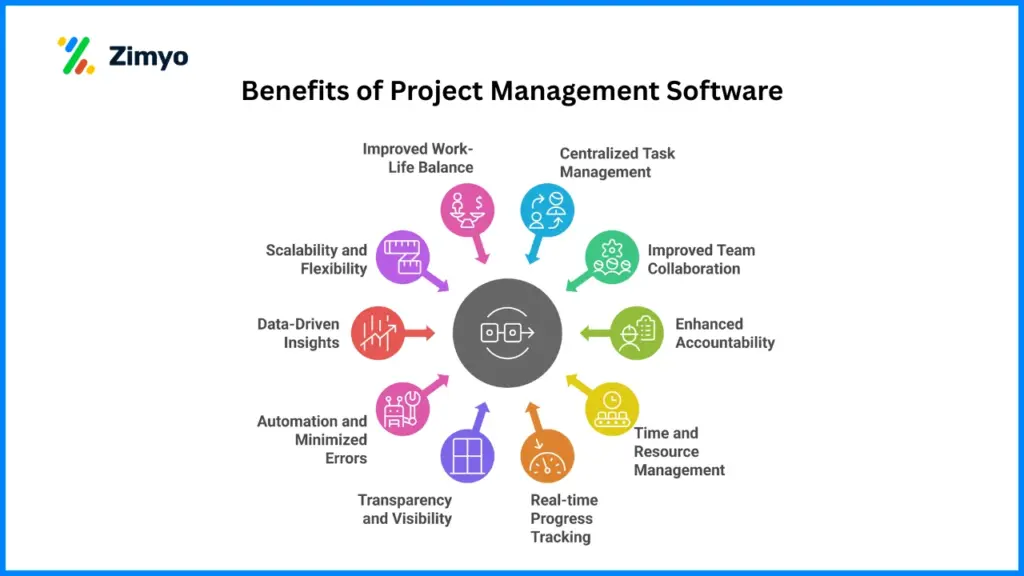
These software tools integrate planning, tracking, communication, and reporting all at one location, keeping teams well-organized and in sync. Let’s take a look at some of the most significant advantages in detail:
1. Centralized Task Management
Given the numerous pieces in a project, it may get very confusing. And a project management tool brings all your tasks, subtasks, files, and deadlines together into one place. Further, which means no more switching between emails, spreadsheets, and chat apps, all of them exist in one place where your whole team can access.
2. Improved Team Collaboration
Modern teams tend to work across various departments or even time zones. A good team management software makes sure everyone is synchronized.
Overall from common dashboards to live comments, project management software encourages open communication and transparency. Thus, this prevents misunderstandings and late deadlines.
3. Enhanced Accountability
Every member is aware of what they’re accountable for, and managers can keep track of progress simply by using a project tracker or dashboard. Further, with accountability, this guarantees on-time completion of tasks and no detail goes through the cracks.
4. Improved Time and Resource Management
Project management software has native time tracking and resource allocation features. Moreover, these enable managers to see who’s doing what, plan workloads, and allocate tasks in a balanced manner, which results in improved productivity and less burnout.
5. Real-time Progress Tracking
Using project tracking software, you can also see how far you are toward hitting your milestones. Besides, Gantt charts, Kanban boards, and progress bars provide a visual snapshot of where each task is and allow you to spot bottlenecks early so that you can take action.
6. Transparency and Visibility
Having a single platform means that everybody, including team members and stakeholders, can monitor how things are going with the project. Also, this visibility creates trust, facilitates smooth coordination, and enables effective decision-making.
7. Automation and Minimized Errors
Automation aspects in software such as Zimyo undertake repetitive jobs like notifications, reminders, and status updates. Moreover, not only does this save time, but it also minimizes human error, hence smoothens the workflow.
8. Data-Driven Insights
High-end reporting and analytics dashboards are usually built into most project management platforms. Further, they assist you in quantifying performance metrics such as task completion rates, time spent, or cost variance, facilitating improved planning for subsequent projects.
9. Scalability and Flexibility
You’re either dealing with a two-person startup or a giant company, and contemporary project planning software will grow with ease. Overall, you can add users, define departments, or work on multiple projects without sacrificing organization.
10. Improved Work-Life Balance
By organizing workloads efficiently and preventing last-minute chaos, project management tools create healthier work environments. So, teams become more proactive, less stressed, and more focused on creativity and outcomes.
Most Important Features in a Project Management Software
Not all project management software is built the same. Some excel in collaboration, while others focus on automation or analytics.
Further, when choosing the best project management tool for your team, make sure it includes these essential features that enhance efficiency and productivity.
1. Task and Subtask Management
At its core, a project management tool should help you create, assign, and monitor tasks easily. Next, subtask features help break down complex goals into smaller, actionable steps, making them easier to track and manage.
2. Project Timeline and Scheduling
A project planner or Gantt chart helps visualize the project from start to finish. Furthers, it provides clarity on task dependencies, milestones, and deadlines, ensuring that all moving parts work in harmony.
3. Collaboration and Communication
Integrated chats, comments, and file-sharing features make teamwork seamless. Also, A tool that fosters communication eliminates email clutter and ensures faster problem-solving.
4. Automation Capabilities
Look for tools that automate routine processes such as task assignment, progress updates, and notifications. Also, automation saves hours of manual effort and ensures consistency across projects.
5. Custom Workflows
Each team has its own way of doing things. Moreover, the best project management software is customizable, letting you build workflows that fit your firm’s process rather than making you bend.
6. Time Tracking and Timesheets
Time-tracking software is essential for measuring productivity. Moreover, they assist in recording billable hours, determining project pricing, and determining inefficiencies which is very important for service-based teams and freelancers.
7. File Storage and Document Sharing
A single point for uploading files and document sharing makes it possible to ensure every member has access to the current version of resources. Also, it reduces confusion due to multiple attachments and old files.
8. Dashboards and Reporting
Insightful reports and visual dashboards help you measure progress, resource utilization, and team performance. Moreover, they support data-driven decision-making, allowing you to adjust your priorities quickly.
9. Integration with Other Tools
A contemporary system for project management should integrate flawlessly with other business applications such as Slack, Google Drive, Outlook, and HR software such as Zimyo. Integrations save time and minimize context-switching.
10. Scalability and Security
Your chosen tool should grow as your business grows. At the same time, it should offer strong security measures such as data encryption, backups, and role-based access to ensure data privacy.
Overall, when a project management tool combines all these features, it transforms from a simple tracker into a complete project management system that powers long-term success.
Free vs. Paid Project Management Tools
One of the most common questions businesses ask is:
“Should we go for free project management tools or invest in a paid one?”
Moreover, the answer depends on your team size, project complexity, and long-term goals. Let’s compare both options in detail.
1. Free Project Management Tools
Free tools are excellent for small teams, freelancers, or startups who are just beginning to organize their work. Also, they typically offer basic task management and collaboration features.
Examples: Trello (free plan), Asana (Basic), ClickUp (Free Forever plan)
Benefits of Free Tools:
- Zero Cost: Great for startups with tight budgets.
- Easy to Use: Minimal setup and training required.
- Essential Features: Includes task creation, boards, and basic progress tracking.
Limitations:
- Restricted storage and user limits.
- Limited integrations and automation.
- Basic reporting features only.
If you’re managing small projects with fewer team members, free tools might serve you well initially.
2. Paid Project Management Tools
Paid plans take things up a notch. They offer a complete project management system with advanced features such as automation, analytics, time tracking, and integrations.
Examples: Zimyo, Monday.com, Wrike, Adobe Workfront, Jira
Benefits of Paid Tools:
- Unlimited Users & Storage: Perfect for scaling organizations.
- Automation: Reduces repetitive work.
- Advanced Reporting: Real-time insights for better decision-making.
- Integration Power: Connects with CRMs, HRMS, and accounting tools.
- Customization: Tailor workflows, dashboards, and notifications to your exact needs.
Limitations:
- Subscription costs may add up.
- Slight learning curve for new users.
Best For: Medium to large businesses, remote teams, and enterprises that need structure, analytics, and security.
3. Which One Should You Choose?
If you’re just getting started, a free project management tool can help you learn the ropes.
But if your business depends on collaboration, resource tracking, or detailed analytics, it’s worth investing in a paid project management software like Zimyo or Monday.com.
Paid solutions not only save time but also improve efficiency and accountability, offering long-term ROI that far outweighs the subscription cost.
Quick Comparison Table
Criteria | Free Tools | Paid Tools |
Cost | ₹0/month | ₹500–₹5,000/month (varies) |
Features | Basic task management | Full automation, reporting, integrations |
User Limit | Limited | Unlimited or scalable |
Customization | Minimal | Advanced customization |
Best For | Freelancers, startups | SMBs, growing businesses, enterprises |
How to Choose the Best Project Management Software
Choosing the right project management software for your team can feel overwhelming. Especially when the market is crowded with tools that promise seamless collaboration and productivity. However, not every tool fits every organization’s needs. So, the ideal software depends on your team size, project complexity, workflow style, and integration requirements.
Here’s how you can evaluate and choose the best project management software for your team:
1. Assess Your Needs and Goals
Start by identifying your project goals and challenges. Do you need a project tracker for daily progress updates or an all-in-one project planning software for multiple departments? Overall, Knowing your objectives will help narrow your choices quickly.
2. Determine Team Size and Collaboration Style
A small startup may thrive on simple task management tools, while a large enterprise might require a feature-rich project management system with automation, reporting, and cross-department visibility.
3. Check for Scalability
Choose a project management tool that grows with your business. Also, as your team expands, your needs will evolve, therefore look for tools that support custom workflows, additional users, and more integrations without slowing down.
4. Evaluate Ease of Use
Even the most powerful software is useless if your team finds it confusing. So, opt for an intuitive interface that your employees can learn quickly, such as tools like Zimyo and Asana. They offer user-friendly dashboards that simplify onboarding and daily operations.
5. Integration with Other Tools
The best project management software integrates with your existing tech stack like email, HRMS, Slack, or CRM systems. Overall, This prevents manual data duplication and improves workflow synchronization.
6. Consider Customer Support and Updates
Choose a vendor that provides responsive customer support and regularly updates their software. Moreover, this ensures you have the latest security patches and feature enhancements.
7. Set a Budget and Compare ROI
While free tools are tempting, consider the long-term benefits of paid versions. They provide you automation, reporting, analytics, and advanced team management software capabilities that often justify the investment.
What to Look for When Choosing PM Tools
Selecting a project management tool is about aligning technology with your team’s working style rather than just comparing features. Here are the key factors to look for when choosing the right project management tools:
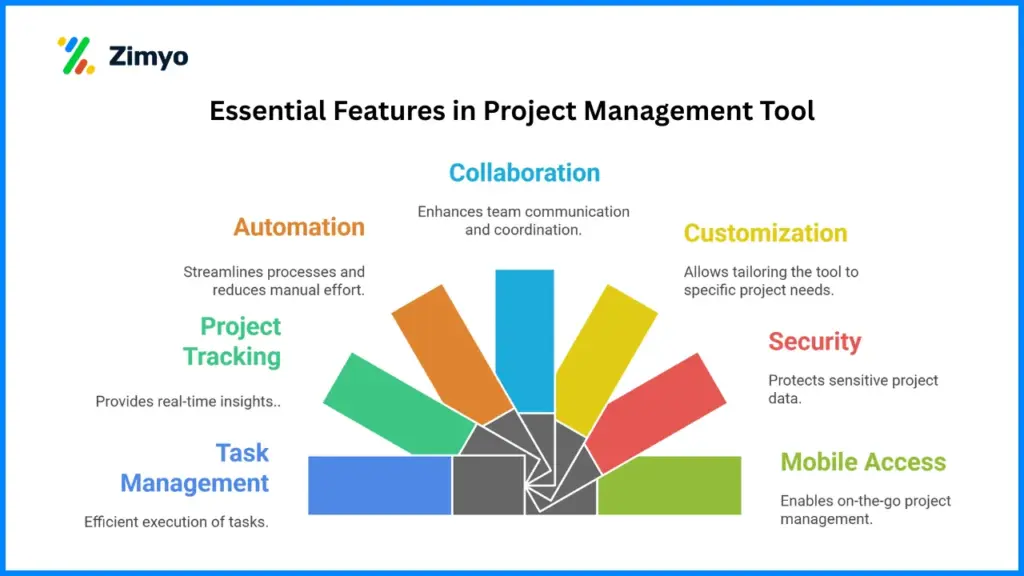
1. Comprehensive Task Management
A good PM tool should let you assign, prioritize, and track tasks easily. Tools like Zimyo and Monday.com allow you to visualize your workflow through Kanban boards, Gantt charts, or simple lists.
2. Project Tracking and Real-Time Updates
Opt for a project tracking software that shows real-time updates, project timelines, and completion rates. This transparency ensures accountability and helps teams meet deadlines consistently.
3. Automation Capabilities
Modern project planning software dwells deeper than manual tracking. Look for automation features that can handle repetitive work like sending reminders, updating task status, or generating reports.
4. Team Collaboration Features
You’ll agree that smooth communication is key to productivity. So, tools that offer built-in chat, file sharing, and comment threads (like Zimyo ) reduce dependency on external messaging apps.
5. Customizable Dashboards and Reports
Every team works differently. And the best project management tools allow you to customize dashboards, reports, and notifications according to your needs.
6. Data Security and Access Control
If your projects involve confidential data, ensure your project management system follows strict security protocols and allows you to manage user permissions effectively.
7. Mobile Accessibility
In today’s hybrid work environment, mobile access is a must. Also, a mobile-friendly task tracker ensures your team can manage projects anytime, anywhere.
Conclusion
In an increasingly digital and fast-paced business world, project management tools are no longer optional but an essential need. Overall, whether you’re managing a small creative team or handling enterprise-level operations, the right project management software can be the bridge between chaos and clarity.
So, from delegating daily activities to monitoring deadlines and visualizing progress, these tools enable teams to stay connected, efficient, and on track. Tools like Zimyo take the next step by combining project management with HR, performance monitoring, and employee engagement, providing you with a fully integrated workspace.
Thus, when selecting a project management tool, prioritize ease of use, scalability, and integration capabilities. Start small, test features, and evaluate what fits your workflow best. With the right project tracker and team management software, you’ll not only meet deadlines but also create a more transparent, productive, and motivated work culture.
Ultimately, fantastic projects aren’t simply finished, but they’re handled efficiently. And the proper tool can be a big difference-maker.
Frequently Asked Questions (FAQs)
Which is the most used project management software?
Globally, several tools like Asana, Jira, and Trello are widely used, but Zimyo is quickly becoming a preferred choice for businesses seeking an all-in-one platform that combines project management, HR, and performance tracking in one unified system.
What is the best project management program?
The best project management software depends on your team’s size and workflow, but Zimyo stands out for offering a complete suite of features, including task tracking, timeline planning, collaboration, and reporting, all in an easy-to-use interface.
What are the big 3 in project management?
Traditionally, the “Big 3” refer to planning, execution, and monitoring, the three key phases that determine project success. So, tools like Zimyo streamline all these stages with automation, real-time tracking, and team collaboration features.
Which project management tool is best for beginners?
For beginners, Zimyo is one of the best project management tools thanks to its simple interface, drag-and-drop task management, and seamless integration with other business tools. Also, it’s ideal for teams just starting their project management journey.

